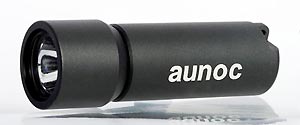- Home
- Directory
- Shop
- Underwater Cameras - Photographic Accessories
- Smartphone Housings
- Sea Scooters
- Hookah Dive Systems
- Underwater Metal Detectors
- Dive Gear
- Dive Accessories
- Diving DVD & Blu-Ray Discs
- Diving Books
- Underwater Drones
- Drones
- Subscriptions - Magazines
- Protective Cases
- Corrective Lenses
- Dive Wear
- Underwater Membership
- Assistive Technology - NDIS
- On Sale
- Underwater Gift Cards
- Underwater Art
- Power Stations
- Underwater Bargain Bin
- Brands
- 10bar
- AOI
- AquaTech
- AxisGo
- Backscatter Underwater Video and Photo
- BLU3
- Cayago
- Chasing
- Cinebags
- Digipower
- DJI
- Dyron
- Edge Smart Drive
- Eneloop
- Energizer
- Exotech Innovations
- Fantasea
- Fotocore
- Garmin
- Geneinno
- GoPro
- Hagul
- Hydro Sapiens
- Hydrotac
- Ikelite
- Indigo Industries
- Inon
- Insta360
- Intova
- Isotta Housings
- Jobe
- JOBY
- Kraken Sports
- LEFEET
- Mirage Dive
- Nautica Seascooters
- Nautilus Lifeline
- NautiSmart
- Nitecore
- Nokta Makro
- Oceanic
- Olympus
- OM System
- Orca Torch
- Paralenz
- PowerDive
- QYSEA
- Scubajet
- Scubalamp
- Sea & Sea
- SeaDoo Seascooter
- SeaLife
- Seavu
- Shark Shield
- Sherwood Scuba
- Spare Air
- StickTite
- Sublue
- Suunto
- SwellPro
- T-HOUSING
- Tusa
- U.N Photographics
- Venture Heat
- XTAR
- Yamaha Seascooter
- Youcan Robot
The Dragon Seamoth
Contributed by Allister Lee
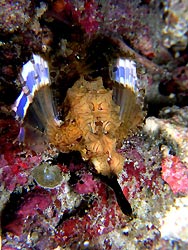 We
saw the Dragon Sea Moth (Eurypegasus draconis) at a dive site at Mabul
Island. Ribbon Valley to be exact. I took a few shots of this cool little fish
a week ago and it is still around now. Hopefully it's gonna stay for a while.
We
saw the Dragon Sea Moth (Eurypegasus draconis) at a dive site at Mabul
Island. Ribbon Valley to be exact. I took a few shots of this cool little fish
a week ago and it is still around now. Hopefully it's gonna stay for a while.
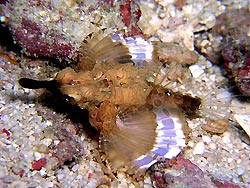 The
sea moth is not a common fish you can find around here but they can be expected
from time to time around the flat, sandy bottom of Mabul Island and Kapalai
Island. I once discovered four Dragon sea moths at Roach Reefs before in the
same dive and site. But I don't think you can see any at Sipadan Island.
The
sea moth is not a common fish you can find around here but they can be expected
from time to time around the flat, sandy bottom of Mabul Island and Kapalai
Island. I once discovered four Dragon sea moths at Roach Reefs before in the
same dive and site. But I don't think you can see any at Sipadan Island.
The Dragon sea moth is one of the strangest fish in the world! Also known as the Little Dragon fish, Short Dragon fish and the Pegasus Sea Moth, this creature actually has the ability to change colors based on its surroundings much like the chameleon. If this wasn't weird enough they also shed their skin like a snake in a single piece!
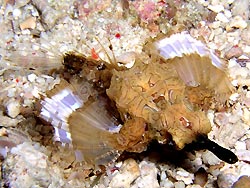 They also have two wing like fins that extend out on
either side of their bodies. As you can imagine, all of these strange characteristics
make the Dragon Sea Moth a favorite among macro lovers.
They also have two wing like fins that extend out on
either side of their bodies. As you can imagine, all of these strange characteristics
make the Dragon Sea Moth a favorite among macro lovers. 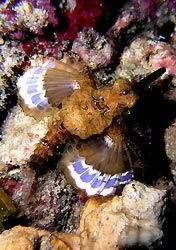 Dragon Sea Moths are
not large, only growing to about 6 inch (15 cm) max. From
this angle in the picture on the right, you can actually see how it resembles
a moth and that's where they got their name from.
Dragon Sea Moths are
not large, only growing to about 6 inch (15 cm) max. From
this angle in the picture on the right, you can actually see how it resembles
a moth and that's where they got their name from.
Sea moths are distinguished by flattened bodies, the presence of large, wing-like, pectoral-fins and a body encased in thick, bony plates.
Their modified pelvic-fins allow them to "crawl" across the sea bottom where they dwell. Check out the claws at the tip of the wing in the image on the right.
Seamoths are masters of camouflaging but up close you can see just how beautiful the body-patterns look.
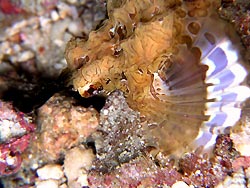
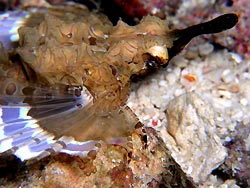
Besides the cool lookin body patterns and wings, big gleaming eyes and all, check out the snout. I guess its been telling a lot of lies and having too much fun with silly Pinocchio.
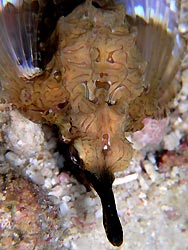
The Dragon sea moth have an elongated snout in front of its jaw. The jaw is highly specialized and can form a tube-like mouth to suck worms and other tiny marine creatures from their burrows.
FUN FACTS:
- The seamoths are a family, the Pegasidae, of fish found only in coastal tropical waters.
- As of now, there are only two genera: Eurypegasus and Pegasus and five species known, namely the Eurypegasus draconis (our subject today), Eurypegasus papilio (Hawaian seamoth), Pegasus lancifer (Sculptured seamoth), Pegasus laternarius, Pegasus volitans (Long tail seamoth)
- It can awesomely shed its skin to grow a new one and change colors to camouflage itself!
- When threatened, it will spread its wings out like picture #2
- It is strongly believed that the seamoth is poisonous but its not really proven or studied yet. There's still a debate going on about whether its needle-like spines are poisonous or not.
- A very delicate and strange creature, seamoths are sold at aquarium shops at a very expensive price. But since it is not easy to care for, the seamoths are not popular aquarium pets.
- It is said that in olden days, seamoths caught in China are so revered that it is dried and used in magic amulets.
- The elusive sea moths don't bite because they have no teeth
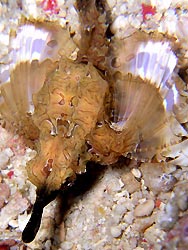
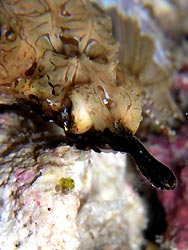
Shopfront
-
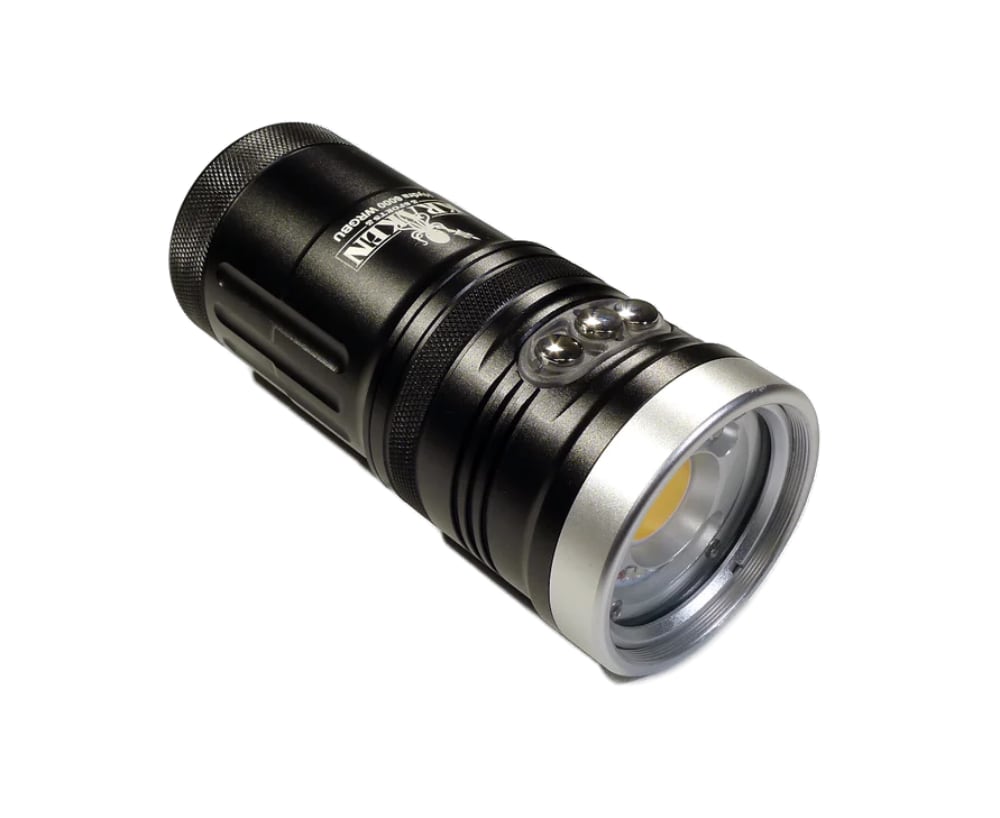 Kraken Hydra 6000 WRGBU
Kraken Hydra 6000 WRGBU
- Price A$ 899.00
-
 FLIP12 Pro Package with DIVE & DEEP Filters & +15 MacroMate Mini Lens for GoPro HERO 5, 6, 7, 8, 9, 10, 11, 12 and 13
FLIP12 Pro Package with DIVE & DEEP Filters & +15 MacroMate Mini Lens for GoPro HERO 5, 6, 7, 8, 9, 10, 11, 12 and 13
- Price A$ 269.00
-
 JOBY SeaPal - Over Under Kit
JOBY SeaPal - Over Under Kit
- Price A$ 764.95
-
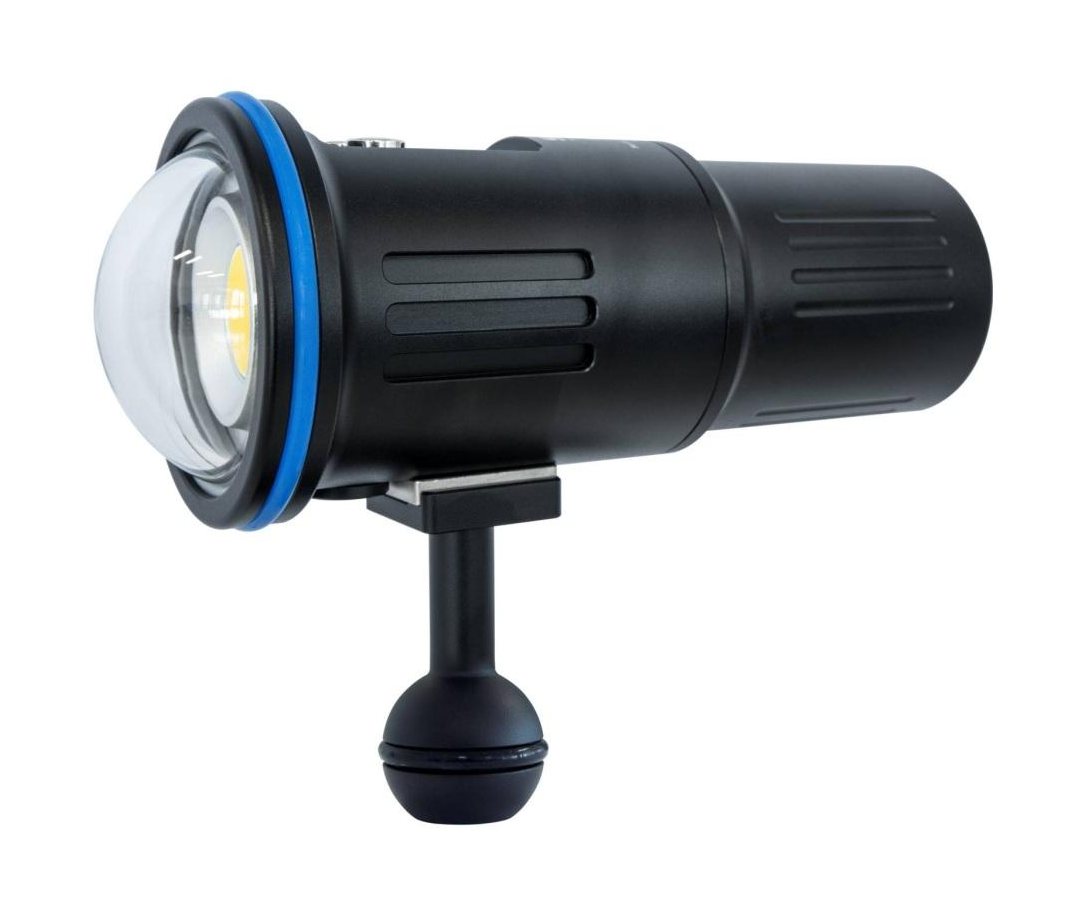 Scubalamp V3K V3 Photo/Video Light - 5600 Lumens
Scubalamp V3K V3 Photo/Video Light - 5600 Lumens
- Price A$ 549.00
-
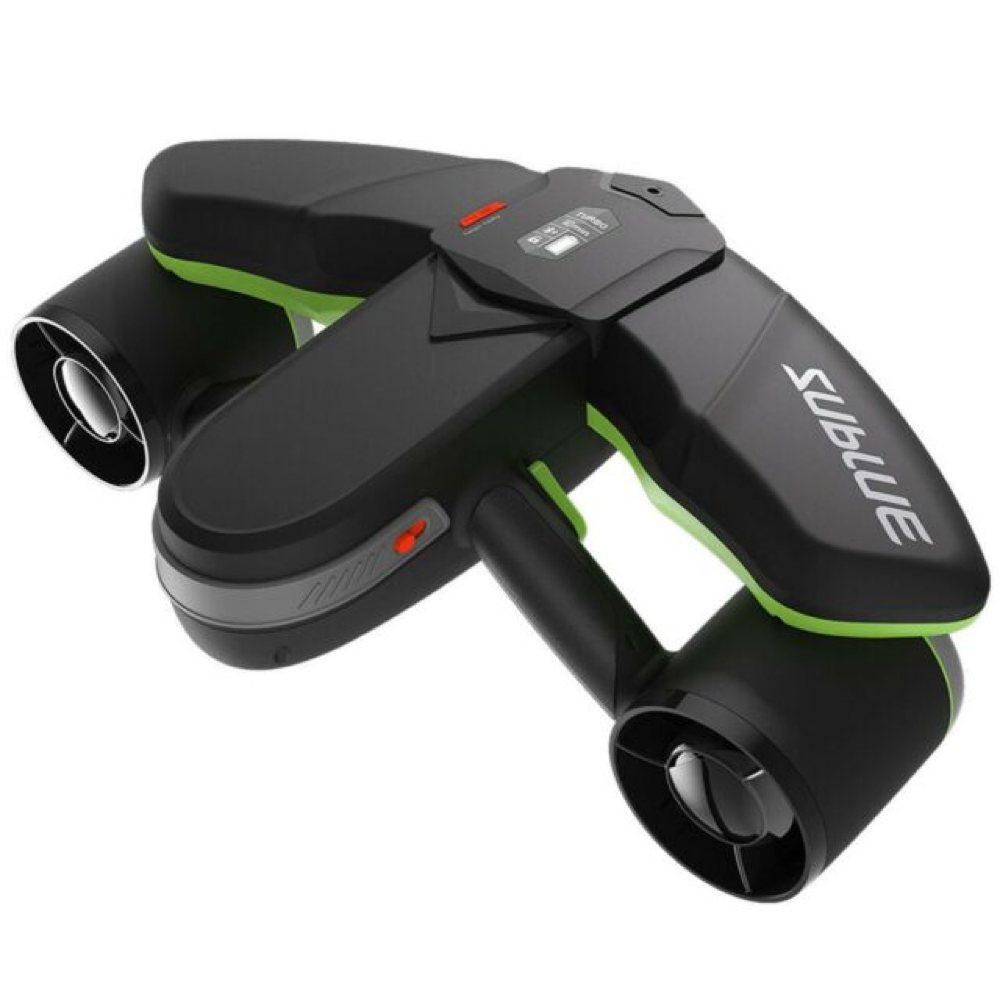 Sublue Navbow - Underwater Scooter
Sublue Navbow - Underwater Scooter
- Price A$ 1,999.00
-
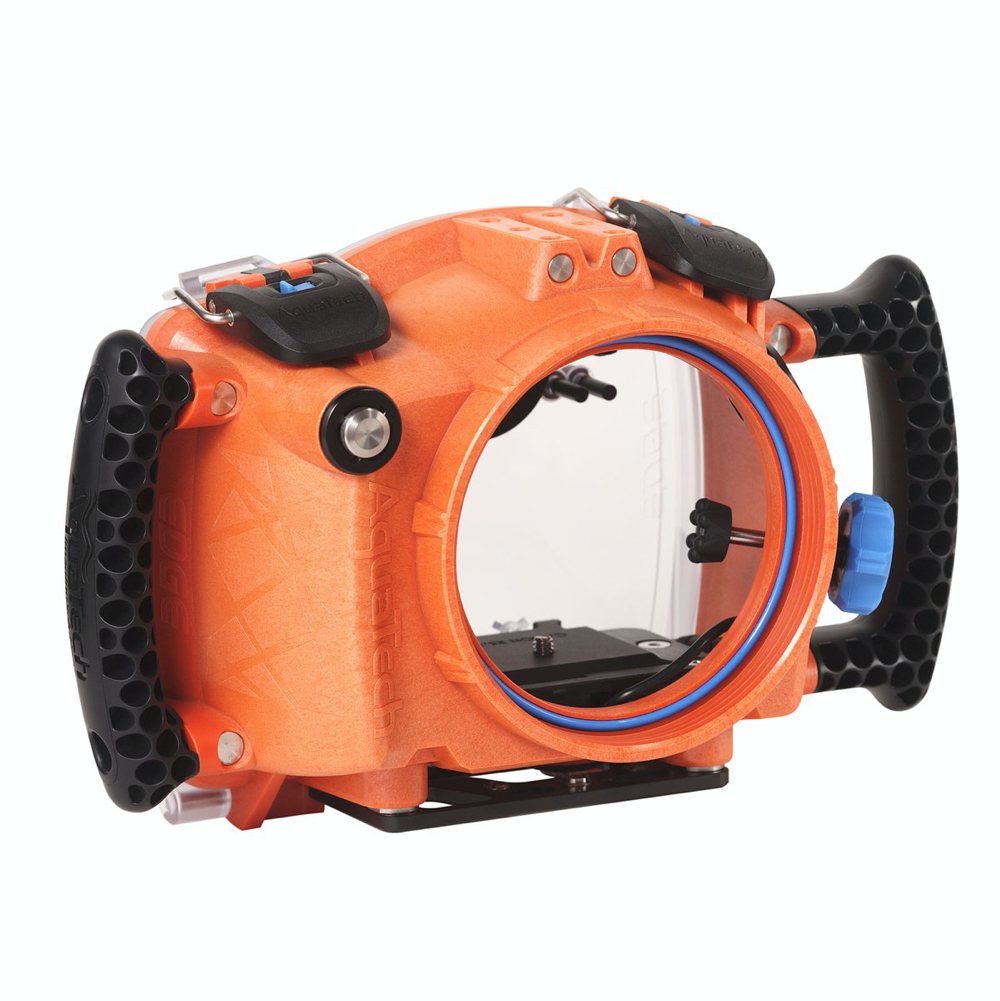 AquaTech EDGE Base Camera Water Housings - Sony mirrorless
AquaTech EDGE Base Camera Water Housings - Sony mirrorless
- Price A$ 1,249.00
In the Directory




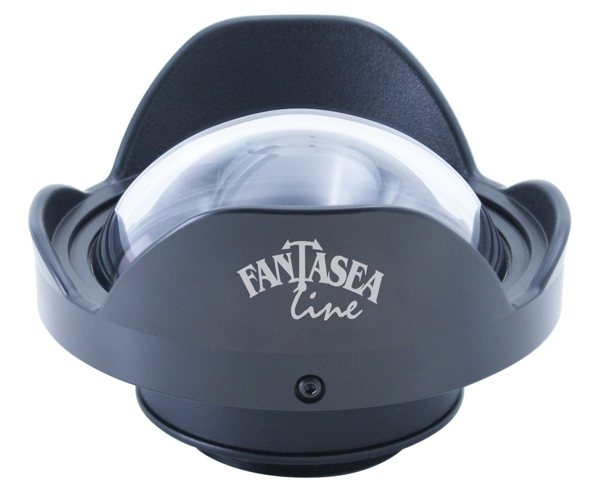
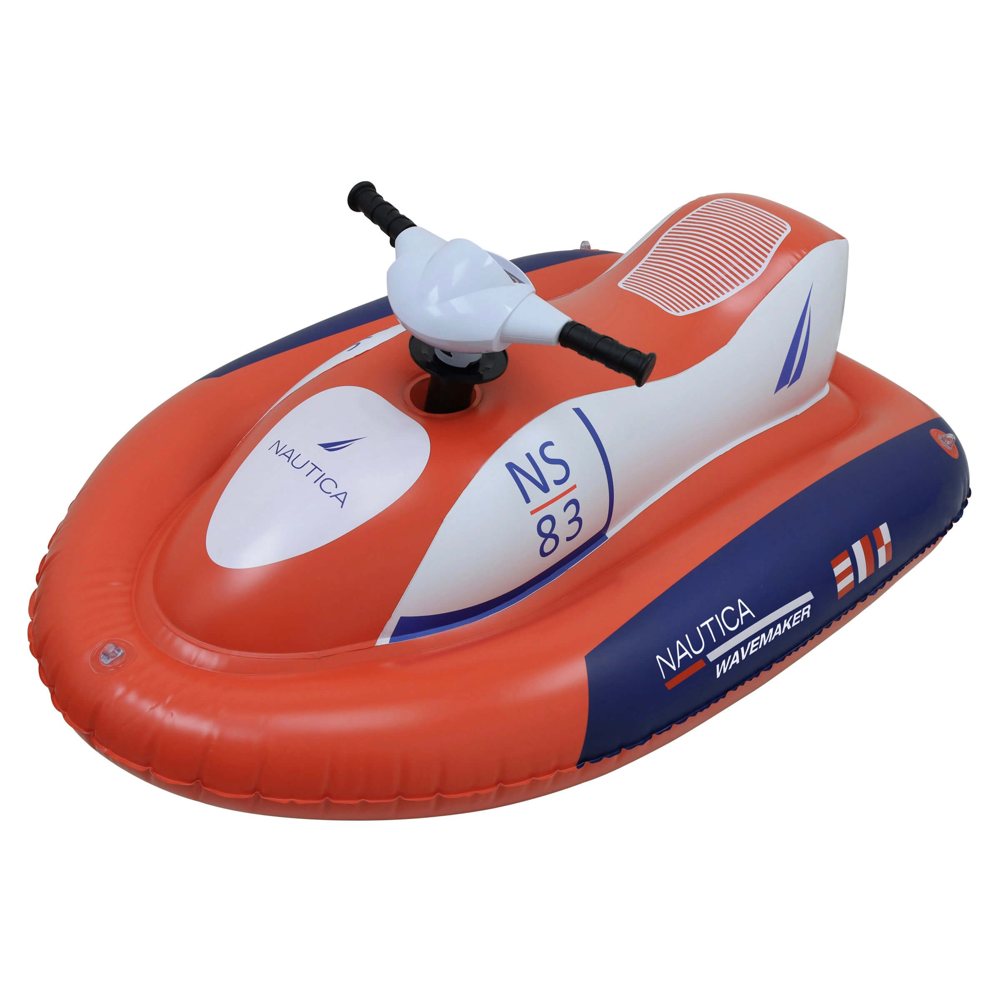


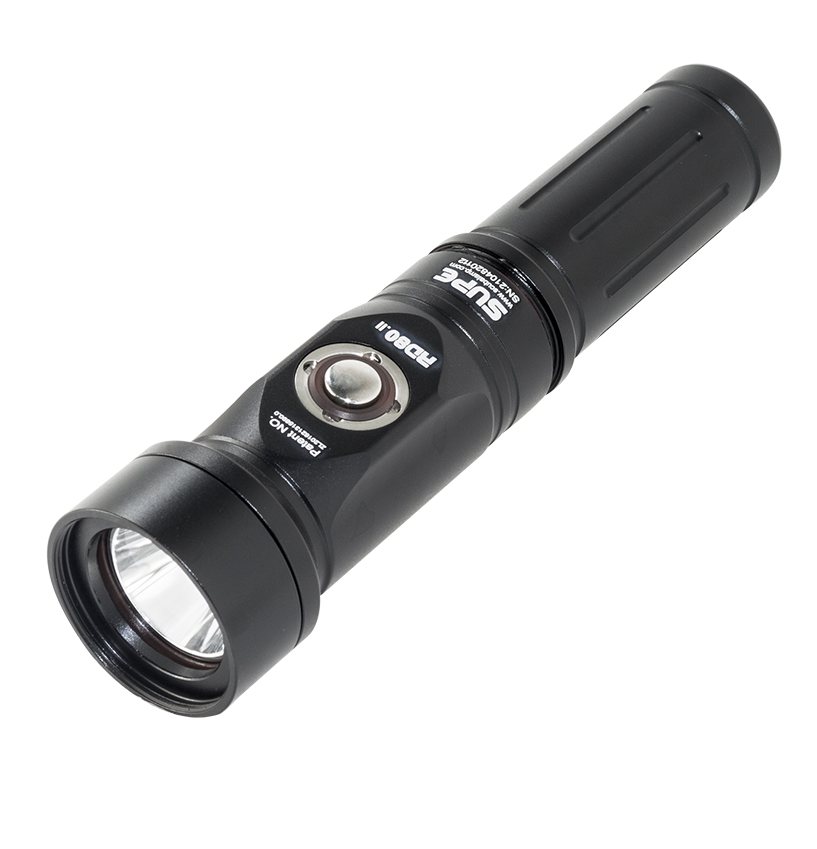
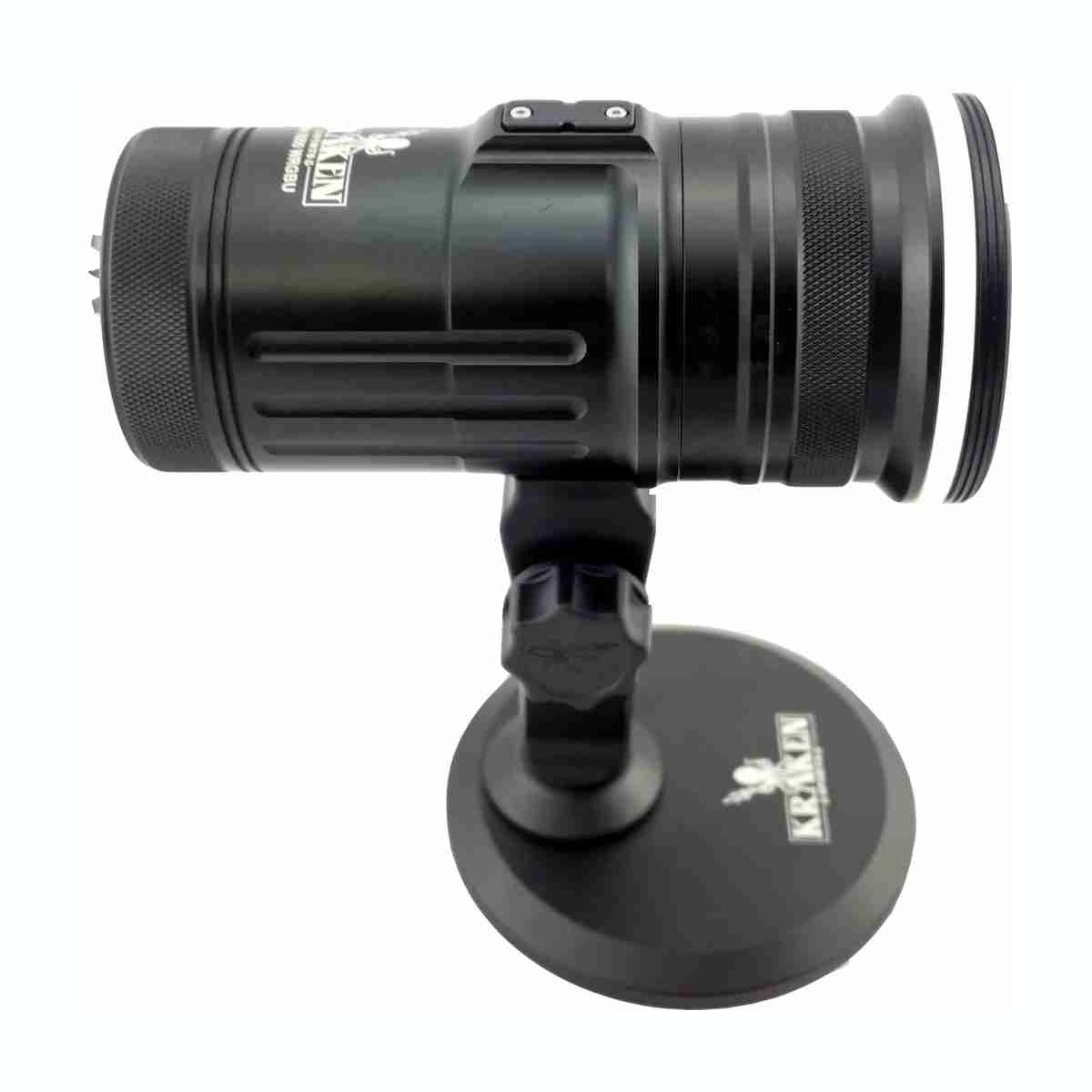



 Scubalamp PV21 LED Video/Photo Light - 2000 lumens wide - 1200 lumens spot
Scubalamp PV21 LED Video/Photo Light - 2000 lumens wide - 1200 lumens spot  Dual Beam Video Light Package with tray and arms - 4000 lumens - Scubalamp PV21 x 2
Dual Beam Video Light Package with tray and arms - 4000 lumens - Scubalamp PV21 x 2 



